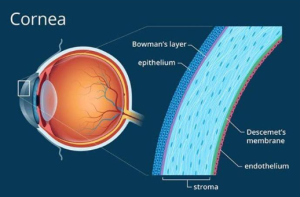Specialized magnifiers that help compensate for an area of vision loss are focused on a specific area or focal distance. Some are designed for patients with peripheral vision loss, others for patients with central vision loss.
Different types of magnifier designs for low vision patients include:
Low vision reading glasses: These are similar to regular reading glasses but with prismatic lenses that provide increased magnification and focus vision to a comfortable focal point. However, due to the high power of these lenses, they may require the wearer to work at close distances as they reduce the field of view. Although it may require some adjustment on the part of the wearer, it usually does not take long for patients to adjust.
How Do Magnifiers Help Low Vision Patients With Reading
Low vision magnifiers provide significantly greater magnification than even the strongest glasses or contact lenses. They help compensate for eye damage by helping patients use a more healthy retina around the damaged area when reading.
Due to aging and other factors, important light-sensitive cells in the retina can degenerate, especially in the center, the part needed when reading small letters. Some magnifiers can also help with contrast, which also plays a role in reading.
Low vision magnifiers for reading can be handheld or mounted depending on your needs. For example, a hands-free device can enable a patient to freely do activities they enjoy such as reading, writing or playing the piano, which low vision can make all-but impossible. Handheld magnifiers, by contrast, are easy to take to places like the supermarket to help read product labels.
Handhelds
This group of magnifiers is probably the most widely used. They are generally fairly easy to use and most lenses are fairly portable so are suitable for various tasks around the house or in shops and cafes etc.
They come in a wide range of powers in illuminated and non-illuminated forms. Usually an illuminated device is preferred to increase the contrast for viewing the print. This is important because many patients may have decreased contrast sensitivity due to cataracts and/or macular degeneration.
Power can range from about X2 to about X13. Field of view is again an important consideration as power increases.
The design of handheld illuminated magnifiers has improved significantly over the past few years in several ways.
In some ranges the shape of the handle is more ergonomically designed, so that the user holds the lens on the reading material in a more comfortable and natural position.
Improved lighting is perhaps the biggest improvement. Most devices have now switched from tungsten bulbs to more effective and efficient LEDs. LEDs are preferred because they emit light that mimics daylight, with a much more uniform level of illumination on the reading material than tungsten. Batteries also last longer with LEDs, making the patient’s life easier. Some recent models have an adjustable LED light so the brightness and colour of the light can be changed to whatever works best for the patient.
Stand Magnifiers
Stand magnifiers have a really important role to play, especially for patients who may struggle to hold a hand-held lens at the optimal distance. For example, they may have some tremors or reduced use of their hands due to a stroke. Stand magnifiers take away the need to judge the optimal focal distance by the lens on the device at that distance. The patient holds the magnifier flat against the reading material.
The range of lenses in this case is quite large, again from about 2X to 15X. Most of these devices are best in illuminated form because they tend to cast a shadow on the print, especially at the stronger end of the scale when the field of view is narrowed.
The patient needs clear instructions and training on how to use these devices, and generally when the reading material and lenses are placed as close to the eye as possible to maximize the field of view. As with any of these devices it is important to talk to the patient about what they want to use the device for, where they will be sitting and trying to figure out the best practical way for the patient to do it.
The initial choice of power is calculated as above and then it is simply a case of trying out some devices subjectively to see what works best for them.
Like handheld devices, these have improved in recent years, mainly due to the use of LED lighting and similar advances in more ergonomic design.
In many cases, both a handheld and a stand magnifier may be useful for a patient because the two devices may serve different roles for the patient. For example, for sitting reading a letter, using a stand magnifier with a clip-board may work best, while working in the kitchen, a more portable handheld kit may be more useful.







